
Applied Physics
A single additive enables long-life, high-voltage sodium batteries
A new electrolyte additive helps sodium batteries achieve lithium-like performance, offering a practical pathway to scalable, lithium-free energy storage.
Page 1 of 2

Applied Physics
A new electrolyte additive helps sodium batteries achieve lithium-like performance, offering a practical pathway to scalable, lithium-free energy storage.

Bioengineering
Microneedle-packed biosensor monitors antibodies linked to food allergies, offering early warning before reactions begin.

Applied Physics
Two-dimensional altermagnets that can convert a temperature difference into electricity could help recover low-temperature waste heat.

Applied Physics
An interface-focused strategy boosts efficiency and stability in perovskite/silicon tandem solar cells.

Applied Physics
Choosing the right ion ‘salt’ can help to improve the number of times a metal battery can be charged and discharged

Applied Physics
Broadband, reconfigurable photonic memristors set the stage for next-generation artificial vision systems.

Applied Physics
A thin layer of heparin sodium enhances the performance of perovskite solar cells.

Material Science and Engineering
A moisture-absorbing cooling composite enhances solar panel efficiency and durability in hot, humid climates.

Material Science and Engineering
By choosing the best chemical to dissolve polymer components, researchers can squeeze more electricity from leftover heat.

Material Science and Engineering
Tracking how charge flows across the surfaces of 2D perovskites should help to design better solar cells and light-emitting diodes.

Material Science and Engineering
MXene-antibody hybrid biosensor device targets a challenge in public health.

Material Science and Engineering
Robust device relies on innovative polymer.

Material Science and Engineering
Innovative polymer materials have what it takes to harvest solar energy in extreme outdoor environments.

Chemistry
Cascade engineering suppresses background noise to boost the sensitivity of X-ray imaging detectors.

Chemical Engineering
Highly complex MOF materials made for sustainability applications such as carbon capture can be rationally devised using a new "merged nets" design framework

Material Science and Engineering
Hexagons of hexagonal boron nitride join up to form two-dimensional insulator for next-generation electronic devices.
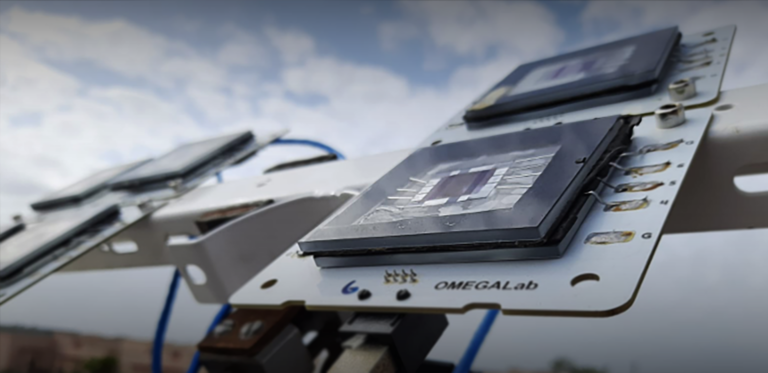
Material Science and Engineering
Multiple strategies for improving the stability of organic solar cells will be needed to make the technology more commercially viable.

Applied Physics
An unconventional 2D ferromagnet might enable smaller and more reliable devices for data storage.

Material Science and Engineering
A device that remembers its electrical past can be used to create low-power and ultrafast switches for next-generation radiofrequency signals.

Material Science and Engineering
Hybrid perovskites are shown to have record-breaking stability and performance.

Environmental Science and Engineering
A new solar-powered system efficiently extracts moisture from the air, offering a sustainable solution for irrigation.

Electrical Engineering
Transparent solar cells utilize non-fullerene acceptors, merging efficiency with aesthetics for urban design transformation.

Material Science and Engineering
Combining traditional silicon with perovskite materials offers higher efficiency solar cells, but further innovation is needed to make them commercially viable.

Material Science and Engineering
Brain-like computing could be possible using electrical memory devices made from an unexpected material.

Environmental Science and Engineering
A superabsorbent film promises ecofriendly cooling solutions against heat stress and global warming.

Material Science and Engineering
The efficiency of tandem solar cells is boosted with improved optical design and a careful selection of the material that connects them together.

Electrical Engineering
Multicomponent mixtures could provide organic solar cells that defy heat and achieve record efficiency.

Electrical Engineering
The molecular structure of organic semiconductors is key to the outdoor stability of organic solar cells.

Chemical Engineering
Metal-organic frameworks with designer windows show exceptional gas storage capability.

Environmental Science and Engineering
Cool heads clear a pathway for the development of a sustainable cooling technology.

Material Science and Engineering
An innovative device could pave the way for more convenient diabetes monitoring.

Computer Science
Computer memory systems that work change resistance rather than charge could greatly improve the performance of deep neural networks for machine learning.

Chemistry
Less hazardous and more sensitive and eco-friendly scintillating compounds could greatly improve X-ray imaging technologies.

Applied Physics
A comparison of different solar-cell technologies shows that an organic material is better at staying cool than common silicon, and how a windy environment can help.

Chemistry
Pulses of light tune MXene's structure to improve energy storage and battery stability.

Chemistry
A proton-driven approach that enables multiple ferroelectric phase transitions sets the stage for ultralow power, high-capacity computer chips.

Applied Physics
Using a two-dimensional material to electrically connect to high-power semiconductor transistors improves device performance.

Chemistry
High-strength but low-density mesh-like polymers with applications in adsorption are synthesized using a simple new method.

Material Science and Engineering
The first demonstration of a functional microchip integrating atomically thin two-dimensional materials with exotic properties heralds a new era of microelectronics.

Material Science and Engineering
An electronic sensor based on individual atoms anchored to MXene nanomaterials can detect tumor-specific biomarkers.

Material Science and Engineering
A microscale “memristor” with inkjet-printed electrodes offers an energy efficient and stable true random number generator for cryptography applications.

Material Science and Engineering
Salt-rejecting microchannels make it easier to turn seawater drinkable using the power of the sun.

Material Science and Engineering
The image of an object that is obscured when the light passes through a scattering material can be recovered in real time.

Material Science and Engineering
Ammonium-ion electrolytes could help create ecofriendly and sustainable alternatives to lithium-ion batteries, particularly for grid storage.

Material Science and Engineering
Screens fabricated from organic materials show promise for improved X-ray imaging for medical and security settings.

Material Science and Engineering
Wirelessly powered large-area electronics could enable a cheaper and greener internet of things.

Material Science and Engineering
Rechargeable batteries to benefit from the development of lithium-loving foams.

Material Science and Engineering
Environmentally friendly renewable biosolvents could help clean up the manufacture of solar panels.
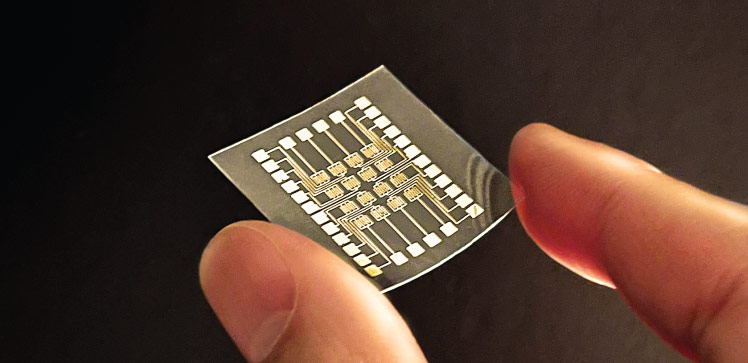
Material Science and Engineering
Compliant and conductive carbon nanomaterial could be the perfect fit for on-skin electronics.

Material Science and Engineering
Nanostructured surfaces enable lab-on-a-chip lung cancer diagnosis.
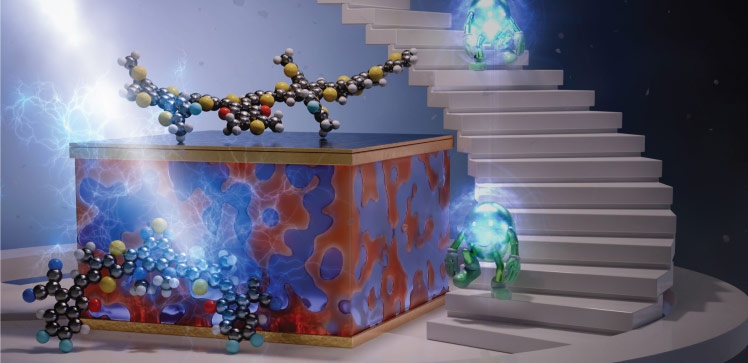
Material Science and Engineering
Precisely determining the energy levels of different solar materials leads to high performance devices.

Material Science and Engineering
Pulses from an atom-sharp tip enable researchers to break and form chemical bonds at will.

Material Science and Engineering
A simple reordering of the layers in solar-cell modules can help improve efficiency.

Material Science and Engineering
An extra metal fluoride layer facilitates charge separation and boosts performance in perovskite–silicon tandem solar cells.

Material Science and Engineering
Graphitic thin films hit high temperatures within seconds under low voltage.

Material Science and Engineering
Light causes small rapid distortions in solar cell material, affecting how charge carriers behave.

Material Science and Engineering
An interface-templated method enhances the crystallinity of large single-layer graphene sheets on insulating supports.

Material Science and Engineering
A novel device architecture makes organic electronics applicable to 5G telecommunications.

Material Science and Engineering
Tunable perovskite-based multilayered films provide long-term stability for high-performing solar cells.

Material Science and Engineering
Pulses of intense light could clean organic pollutants from wastewater.

Material Science and Engineering
Wearable device alerts users about muscle fatigue by monitoring pH levels of sweat.

Material Science and Engineering
Transistor-based sensors offer hope for rapid diagnosis and treatment for COVID-19 and other infections.

Material Science and Engineering
Damage from adding electrical contacts to sensitive semiconductors can be mitigated using a buffer layer and optimized deposition.

Material Science and Engineering
Batteries made from earth-abundant metals show great potential for grid-scale energy storage.

Material Science and Engineering
A nano-scale memristor is shown to have superior stability for random number generation as an integral part of secure data transmission.

Material Science and Engineering
Clever contacts enhance perovskite/silicon tandem solar-cell performance.

Material Science and Engineering
A simple holistic solution plugs the performance-sapping defects that hamper new alternative solar materials.

Material Science and Engineering
A layer of hierarchically three-dimensional porous graphene greatly suppresses a problem holding back the development of lithium-sulfur batteries.

Material Science and Engineering
A single-molecule layer that helps to channel electrical charge into an electrode can outperform the best conventional material.

Material Science and Engineering
Mixed-cation single crystals narrow the gap between perovskite and top-performing semiconductor solar cells.

Material Science and Engineering
Nanoclusters with a copper-hydrogen core provide new structure-activity insights.

Material Science and Engineering
Combining two light-absorbing materials and optimizing the flow of current improves the performance of solar cells.

Material Science and Engineering
Fluid injection of perovskite semiconductors creates microwires to build different optoelectronic devices on a single silicon chip.

Material Science and Engineering
An electrochemical method for stabilizing a reactive molecule can help the development of higher efficiency solar cells.

Material Science and Engineering
Soft, stretchy, slimline and strong electronics could accelerate the arrival of artificial skin.

Material Science and Engineering
Small molecules could hold the key to enhancing the efficiency of organic solar cells.

Material Science and Engineering
High-performance perovskite solar cells are made using a manufacturing-friendly liquid-based process suitable for roll to roll production.

Material Science and Engineering
A deeper understanding of efficiency-limiting processes provides design rules for organic solar cell materials.

Material Science and Engineering
Treating silicon with carbon dioxide gas in plasma processing brings simplicity and control to a key step for making solar cells.

Material Science and Engineering
Air-stable coatings can improve the longevity of wearable devices that tap into body heat.

Material Science and Engineering
Ultrathin charge-transport layers enable low-cost solar cells to avoid premature degradation from ultraviolet light.

Material Science and Engineering
Researchers develop a better understanding of how novel solar cells developed in the lab will operate under real conditions.
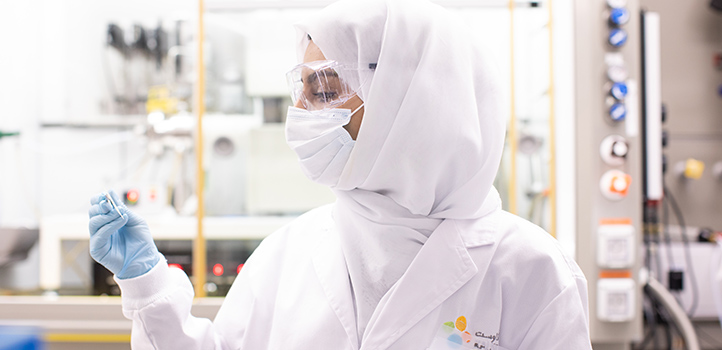
Material Science and Engineering
Imaging artifacts discovered in high-resolution electron microscopes may impact development of next-generation electronic devices.

Material Science and Engineering
Multilayered carbon material could be the perfect fit for heat management in electronic devices.

Material Science and Engineering
Surfaces featuring atomic-scale ledges and steps can act as reusable templates for producing nanoelectronic components.

Material Science and Engineering
Efficient yet exceptionally light organic solar cells created entirely by inkjet printing.
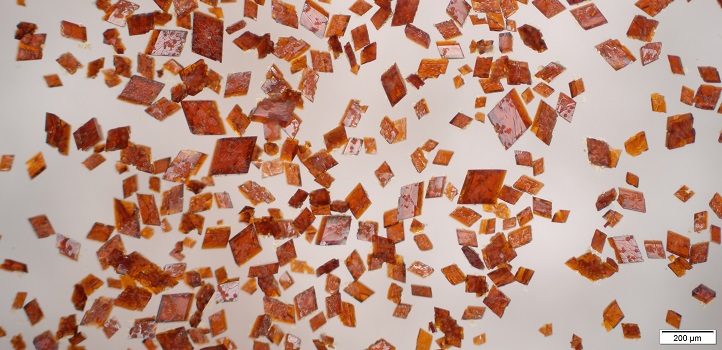
Material Science and Engineering
Atomically precise nanocluster may provide fresh direction for nanocatalysts.

Material Science and Engineering
The successful partnering of perovskite and silicon solar cells leads to solar cells with higher efficiencies that can also be mass produced.

Material Science and Engineering
Scientists working in KAUST’s Core Lab facilities are continuing to push the boundaries of what the university’s major instruments can do.

Material Science and Engineering
Understanding the optimal process for fabricating coupled nanocrystal solids could help researchers to improve optoelectronics devices.

Material Science and Engineering
Solar cells based on single-crystal perovskite films hit a new efficiency record of 21.9 percent.

Material Science and Engineering
Device controlled solely by voltage paves the way for spintronics with ultralow power consumption.

Material Science and Engineering
A way to remotely charge batteries through flesh could help develop components for permanent implantable medical devices.

Material Science and Engineering
The flow of an electrical current can be imaged directly using magnetic bubbles.

Material Science and Engineering
Unconventional perovskites with an inverted structure see a leap in efficiency and longevity with an amine-based additive.

Material Science and Engineering
A simple, cost-effective technique uses solution-based printing to make better ultrathin transistors.

Material Science and Engineering
Sensors that are worn on the skin could soon be powered by our own body heat.

Material Science and Engineering
Tungsten disulfide helps to channel charge in flexible photovoltaics.

Material Science and Engineering
A class of atomically thin 2D compounds, known as MXenes, have a unique combination of properties that are useful for electronic and sensing applications.

Material Science and Engineering
Zirconium-doped transparent electrodes boost the power conversion efficiency of perovskite-based tandem solar cells.